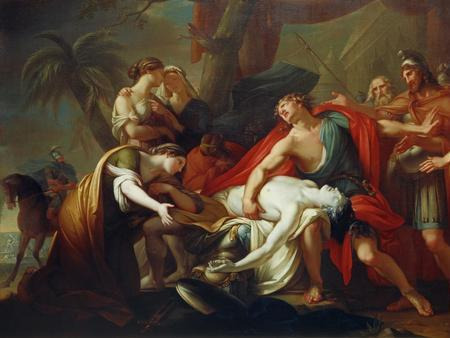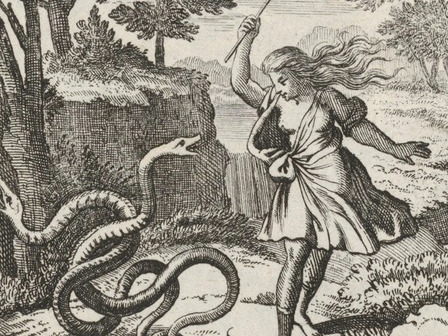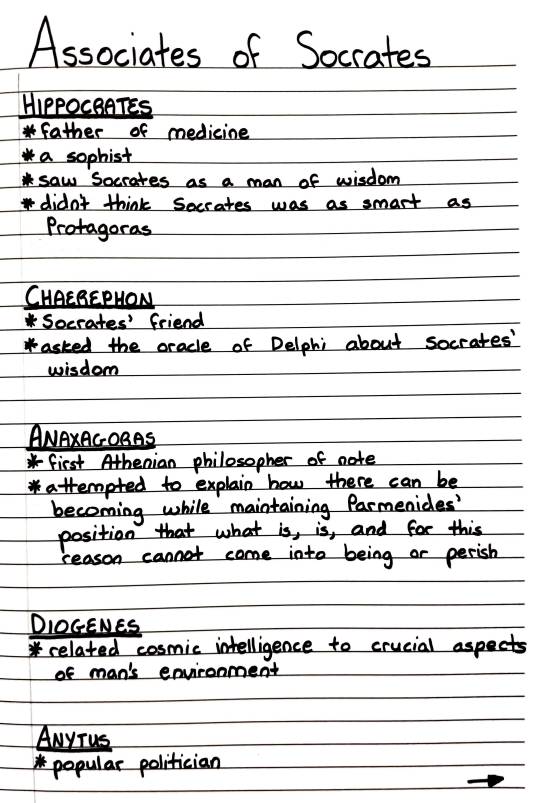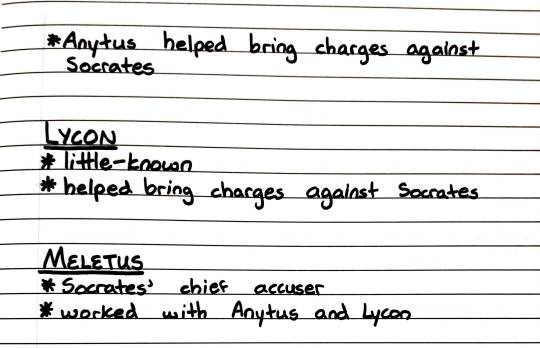#ancient greeks
Explore tagged Tumblr posts
Text


Achilles and Patroclus // Apollo and Hyacinthus


Ganymede // Hylas


Narcissus // Orpheus


Artemis // Tiresias
LGBTQ+ Icons in Greek Mythology
- in the honour of Pride Month 2024
In order: ”Achilles Lamenting the Death of Patroclus” by Gavin Hamilton // ”The Death of Hyacinthus” Nicolas-Rene Jollain // ”The Abduction of Ganymede” by Peter Paul Rubens // ”Hylas and the Nymphs” by John William Waterhouse // ”Narcissus” by Caravaggio // „Orpheus” by Paul Duqueylar // „Artemis” statue replica after Leochares // „Tiresias” by Johann Ulrich Kraus
#dark academia#art academia#classic academia#light academia#darkest academia#academia#art#art history#art aesthetic#dark academia aesthetic#lgbt pride#lgbtq#pride month#happy pride 🌈#ancient greeks#greece#ancient greece#greek myth art#greek gods#greek mythology#myths#achilles#patroclus#patrochilles#apollo#hyacinthus#ganymede#hylas#narcissus#orpheus
393 notes
·
View notes
Text

Torso of a youth, probably Apollo (4th cent. B.C)
The Ancient Agora of Athens
#greek art#apollo#ancient#ancient art#ancient greece#ancient greeks#ancient history#antique#archeological museum#sculpture#statue#greek god#greece#athens#ancient agora#classical academia#light academia#dark academia
112 notes
·
View notes
Text
youtube
Giggerty Greeks
youtube
Goofy Gladiators
youtube
When Germans first met Romans
youtube
Medieval Marriage
youtube
Kings Be Like
#Ancient Greeks#Ancient Rome#Gladiators#Snerk#Ancient Germans#Roman Empire#Ancient World#Jokes for Nerds#Middle Ages#Youtube
43 notes
·
View notes
Note
Not wanting to sound like a 19th century racial anthropologist lol, but is the greek nose that common among greeks ? Most greeks i know have big noses, so do i have just a shitty sample or was the greek nose named greek for some strange reasons ?
You do sound a bit like that hahaha
No, there's just a series of misconceptions you are making here.
The "Greek nose" is not a Greek-born concept. It was the Western Europeans who started speaking of a "Greek nose" stereotype by observing ancient Greek statues.
The Greek nose has nothing to do with size. The Greek nose refers to the straight nose, the nose that has no upturned or downturned tilt. It can be massive, so to speak, as long as it's straight.
Many ancient Greek statues have a characteristic nose that also has a straight bridge, a bridge that seems to be completely aligned with the forehead, without any bump at all or any upwards inclination. This was an artistic choice, it seemed to be some sort of beauty ideal to them, which means it could perhaps have existed but it was rare. In our times, such a feature kind of exists but is indeed quite rare, not just amongst Greeks, but amongst human phenotypes in general.
The way you can tell this was a beauty ideal and not a common reality is that this straight bridged nose is in most statues depicting gods or idealised conceptions of youth (like kouros and kore) yet hardly in statues of actual Greek mortals that truly existed. And I think one of the biggest flaws in the comparisons foreign people are so keen in trying to do between ancient Greeks and modern Greeks is that they compare modern Greeks to ancient Greek gods and not ancient Greek mortals...!
Judging by living amongst modern Greeks and by looking at statues of ancient Greek mortals, I will say that both groups seem to have had pretty diverse noses, maybe with a tendency towards a medium or a moderately large size and, indeed, a straight shape. That's not to say that there aren't numerous Greeks with tiny noses, delicate noses, upturned noses, very large noses, hooked noses, bumpy noses, downturned noses, round noses, wide noses.
I will say however that the most standard or super common characteristics you will see in a Greek's nose is to be pretty defined, on the pointier rather than the rounder side, and again mostly straight, usually medium to moderately large, and more often with narrow nostrils, without that meaning that all the "less common" traits are not totally present in the population as well. A prime example being Socrates in fact, who had a very uncharacteristic nose for a Greek, but he was in fact an Ancient Greek native Athenian. The rarest traits in Greek noses are a nose being too short or too rounded or too wide. Socrates had all that.
But I am a little confused by you sort of suggesting that modern Greeks have large noses "as opposed to ancient Greek statues" because to my eyes ancient Greek statues - both of mortals and even idealised ones - tend to have prominent noses, maybe more often on the large rather than the small side. A small nose is actually kind of rare in Greek statues, no?
Here are some examples of statues of Ancient Greeks who actually existed:

...You know? The smallest nose here is medium. And there is a lot of diversity in shapes.
(Obviously realistic looking mortal female statues are harder to find in a quick search, so I just went for famous Ancient Greek men. Alexander is not included, because his statues were always highly idealised / deified.)
BTW during my search of Greek statues I found this image. Has a variety of noses too!

* how dare the person who made this not know Psarantonis’ name, when they know everyone else, this is sacrilegious!
As for your sample, I wouldn’t use the term shitty but it is limited indeed, not because it is not representative of Greeks but because it is not diverse enough nose-wise.
35 notes
·
View notes
Text

The Trojan Horse: that time Odysseus weaponized gift giving!😄
📜🐴⚔️
#history#trojan horse#epic the musical#the iliad#the odyssey#ancient greek history#the aeneid#homer#poet virgil#epic the troy saga#writing history#mythology#ancient greeks#epic latin poem#troy#classic story#historical writing#ancient history#myths#ancient greek mythology#historical figures#trojan war#ancient rome#latin#nickys facts
22 notes
·
View notes
Text

🌿Compilation of ancient greek art🌿
#art#fashion#byzantium#ancient art#ancient greece#greece#meditteranean#ancient history#hellas#ancient greeks#archaeology
44 notes
·
View notes
Text
When they saw Patroklos dead
—so brave and strong, so young—
the horses of Achilles began to weep;
their immortal nature was upset deeply
by this work of death they had to look at.
They reared their heads, tossed their long manes,
beat the ground with their hooves, and mourned
Patroklos, seeing him lifeless, destroyed,
now mere flesh only, his spirit gone,
defenseless, without breath,
turned back from life to the great Nothingness.
Zeus saw the tears of those immortal horses and felt sorry.
“At the wedding of Peleus,” he said,
“I should not have acted so thoughtlessly.
Better if we hadn’t given you as a gift,
my unhappy horses. What business did you have down there,
among pathetic human beings, the toys of fate.
You are free of death, you will not get old,
yet ephemeral disasters torment you.
Men have caught you up in their misery.”
But it was for the eternal disaster of death
that those two gallant horses shed their tears.
- Horses of Achilles, by Constantine Cavafy
16 notes
·
View notes
Text
Before you heal someone, ask him if he's willing to give up the things that make him sick.
Hippocrates
#hippocrates#quotes#philosophy#wisdom#life#writer#psychology#write#ancient greeks#ancient greece#idea#ideas#art#artist
156 notes
·
View notes
Text
Okay. So here’s what I’ve been wondering (and then what I found):
Why did we all decide that this ♥️ represented a heart? I mean… it bears a little bit of resemblance to an actual heart 🫀, but not really enough for it to make sense to me…
So I looked it up.
The best working theory is that is comes from the shape of the Silphium plant’s seedpod.

The Silphium plant was the famous plant with contraceptive properties that the Greeks and Romans used as birth control so much that they literally used up the plant into extinction.
The symbol for love comes from a plant that was used to stop procreation and which ultimately became extinct from overuse.
I think you can take the moral of this story as “love conquers all”.
Or perhaps more fully: “love will take your ridiculous symbol of it, your attempt to stop it, and make you so f*ckbunny that you wipe out the very thing you tried to use to stop it".
In this Ted Talk, I will....
#love conquers all biaches#love conquers all#ted talks#ted talk#this has been my ted talk#welcome to my ted talk#love#symbols of love#heart#history#romance#Silphium#history facts#roman#greek#ancient rom#ancient romans#ancient history#ancient greeks#ancient greece#heart shaped
7 notes
·
View notes
Text

#ancient greeks#greek philosophy#olympiodorus#plato#Socrates#political philosophy#the trial of socrates
5 notes
·
View notes
Text
Time Travel Library of Alexandria/Lost Literature Winners Match Up 3:
Winners head to head.
37 notes
·
View notes
Text









Ancient Agora Museum // Athens // Greece
#dark academia#art academia#classic academia#light academia#dark academia aesthetic#art academia aesthetic#academia#art#art aesthetic#art history#architecture aesthetic#ancient greeks#greek mythology#greek gods#greece#ancient greece#athens#ancient greek art#columns#greek architecture#darkest academia#academics#art photography#architecture photography#ancient life#history#ancient agora#museum aesthetic#museum photography
46 notes
·
View notes
Text

Statue of Dionysus, god of wine.
Archeological Museum of Butrint, Albania
Found during the excavations of Ninfeo of Butrint in 1929.
#greek art#dionysus#albania#ancient#ancient age#ancient art#ancient civilization#ancient greece#ancient greeks#ancient history#antique#archaeological museum#archaeology#archaeology museum#archeological museum#butrint#sculpture#statue#greek god#unesco
109 notes
·
View notes
Text
Associates of Socrates


Patreon
#studyblr#notes#history#historyblr#western civ#western civilization#western civ 1#western civilization 1#socrates#ancient greece#greece#greek philosophy#philosophy#philosophers#introductory philosophy#greek philosophers#philosophers of ancient greece#ancient greek philosophers#lycon#meletus#diogenes#hippocrates#anytus#anaxagoras#chaerephon#ancient greeks#ancient history#greek history#ancient greek history#world history
15 notes
·
View notes
Text
Flags of the Athenian Empire


These are the flags of the Athenian Empire. I couldn’t decide which I liked better, so I went with both of them. They come from a world where Athens won the Peloponnesian War. Following the defeat of Sparta, the Delian League was expanded to include the Greek colonies in Italy, the city-states in Anatolia and all of Greece. All of this new territory meant more treasure for Athens' coffers. Athens used much of this new-found wealth to expand its military and navy. The unification of the Greek city-states meant that the Macedonian Conquest never occurred, and Alexander the Great never came to power. Though it was still known as the Delian League, in reality, all of the city-states knew that they were now part of the Athenian Empire.
The threat of Persia was an ever-looming concern. Athens funded many rebellions against Persia in regions such as Egypt and the Levant. Eventually, Athens declared war on the Persian Empire and conquered it in short order. However, most of the territory was lost within a few generations. Athens also went on to conquer Carthage, the fledgling Roman Republic and expanded its territory into Gaul. Athens also expanded into Hispania and the British Isles, but never for too long.
Following this series of conquest Athens began to focus more intellectualism and the acquisition of knowledge. Many libraries and centers of learning were founded across the Athenian Empire. The Athenian Empire never truly fell, but over the years it did lose territory; at its smallest, it was comprised of Greece and Anatolia. However, Greek influence on language, art and culture is felt throughout its former empire and the world at large. In many ways, the Athenian Empire can be seen as the Western world's equivalent of China in terms of influence and culture.
The flags feature an owl clutching an olive branch, symbols of Athens patron goddess Athena. The colors of the flags are black and orange in reference to Ancient Greek pottery. The black on the first flag is also a reference to the black sails of Theseus, mythical king of Athens.
Link to the original flags on my blog: http://drakoniandgriffalco.blogspot.com/2017/09/flags-of-athenian-empire.html?m=1
#alternate history#flag#flags#alternate history flag#alternate history flags#vexillology#Athens#Athenian Empire#Flags of the Athenian Empire#Greece#ancient greeks#ancient greece#peloponnesian war#Delian League#athens greece
47 notes
·
View notes